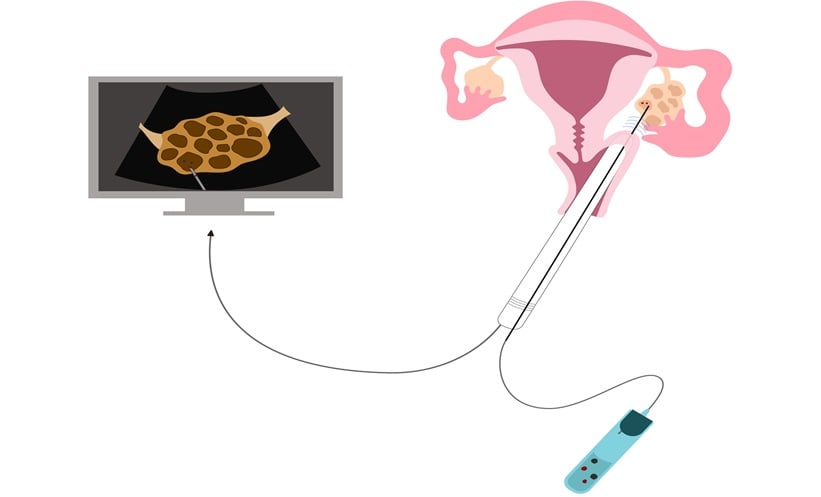THE 41st Annual Meeting of the European Society of Human Reproduction and Embryology (ESHRE) opened its doors in Paris, France, this June, marking a triumphant return to the French capital after years of postponement. From the Euro 2016 Championships to a pandemic and, most recently, the 2024 Olympics, the city’s long-awaited turn as host was finally realised, and it did not disappoint.
Held in the architecturally striking Paris Convention Centre, the ceremony welcomed a record-breaking 12,582 participants from 138 countries, alongside 2,045 exhibitors.
The ceremony began with reflections on France’s unique contributions to reproductive medicine, from the birth of the country’s first IVF baby, Amandine, in 1982, to pioneering achievements in oocyte vitrification and uterus transplantation. René Frydman, Faculty of Medicine, University Paris XI, France; Department of Gynecology and Obstetrics, Antoine Beclere Hospital, Clamart, France, a key figure in many of these milestones, was awarded honorary membership in recognition of his decades of groundbreaking work and ethical leadership in the field.
Joining him as an honorary member was Kay Elder, whose decades-long careerat the Bourn Hall Clinic, Wickford, UK, home to some of the earliestdevelopments in IVF, was celebratedfor its impact on embryologist training and clinical excellence.
The ceremony continued with ESHRE Chair, Karen Sermon, taking the stage to reflect on the society’s recent achievements. Over one million assisted reproductive technology cycles were recorded across 39 European countries in 2021 alone. A newly launched EU-funded registry for cycle-by-cycle data is already being piloted in four countries, capturing data from more than 30,000 patients, with the aim of expanding across Europe. Since 2015, ESHRE has published 29 clinical guidelines and best practice recommendations, with ongoing updates to ethical frameworks in response to scientific progress. Certification programmes in embryology, reproductive surgery, and nursing continue to expand, helping to standardise clinical quality across regions.
Two research grants were awarded during the ceremony. The first focused on AI in fertility decision-making, and the second on the impact of environmental mutagens on reproductive health. Both highlight the society’s commitment to funding innovation and supporting the next generation of researchers.
ESHRE continues to play a pivotal role in shaping European legislation and public health policy. The society has been closely involved in revising EU regulations on substances of human origin, and is a founding member of the Coalition for Fertility, promoting universal access to fertility treatment across Europe. Its advocacy work extends to partnerships with organisations such as Fertility Europe and the Biomed Alliance, strengthening its voice in both clinical and political arenas.
In true ESHRE fashion, the opening ceremony closed not just with data and debate, but with celebration, a tribute to the Late Maurice Béjart’s ‘The Rite of Spring’, performed by dancers from the Neodance Academy Mandalab, Paris, France, which echoed the theme of creation and transformation that underpins reproductive medicine itself.
As Paris welcomed the global fertility community, ESHRE 2025 began not just as an Annual Meeting but as a celebration of past triumphs, present unity, and future potential. EMJ was thrilled to be a part of this year’s Annual Meeting, and looks forward to next year’s Annual Meeting, which will be held in London, UK.
Endometriosis-Related Infertility Linked to Higher Pregnancy Rates Than Other Infertility Causes: Landmark Population-Based Study
A MAJOR study presented at ESHRE 2025 has found that women with infertility related to endometriosis are significantly more likely to become pregnant than women with infertility from other causes.1 The findings come from the largest and longest population-based study of its kind, analysing over four million women in England over 30 years.
Led by Lucky Saraswat, University of Aberdeen, UK, and conducted in collaboration with researchers at the University of Edinburgh, UK, as part of the EU-funded FEMaLe consortium, the study linked primary care, secondary care, and maternity records for women aged 13–50 years who presented with infertility or symptoms of endometriosis between 1991–2020.
Of the 4,041,770 women included, 245,994 had a recorded diagnosis of infertility, and 111,197 had surgically confirmed endometriosis via laparoscopy or laparotomy. Among those with infertility, 14,904 (6.1%) had confirmed endometriosis, with more than half (57.4%) experiencing infertility prior to their diagnosis, highlighting ongoing diagnostic delays.
The data showed that women with infertility were over twice as likely to be diagnosed with endometriosis compared to women without infertility. Notably, among women with endometriosis-associated infertility, pregnancy rates were four times higher than among women with infertility caused by other factors such as ovulatory dysfunction, tubal factors, or unexplained infertility. Overall, 40.5% of all women with endometriosis in the study had at least one pregnancy during the study period.
These findings suggest that despite the established link between endometriosis and infertility, many women with the condition, particularly those diagnosed and managed early, may retain considerable reproductive potential. Saraswat noted that laparoscopic surgery may improve outcomes in select cases, and that increased awareness of endometriosis may prompt earlier fertility care-seeking behaviour.
The results offer a valuable evidence base for fertility counselling, enabling clinicians to provide more personalised and optimistic guidance to women diagnosed with endometriosis. Anis Feki, Chair-Elect of ESHRE, called the findings reassuringand a reminder of the importance of timely diagnosis and tailored fertility management strategies.
Microplastics Discovered in Human Reproductive Fluids, New Study Reveals
NEW research presented at ESHRE 2025 has confirmed that microplastics are present in human reproductive fluids, in both women and men.2
Concerns about microplastic pollution and its potential effects on human health have intensified over recent years, with research demonstrating that these plastic particles, defined as smaller than 5 mm, can accumulate in various organs and tissues. Microplastics have been linked in animal studies to inflammation, DNA damage, and cellular ageing, but data on their impact within the human reproductive system remain sparse.
Researchers analysed follicular fluid from 29 women and seminal fluid from 22 men, applying strict anti-contamination measures. Samples were collected and stored in glassware and underwent chemical treatment before being examined using laser direct infrared microscopy. Microplastics were identified in 69% of all analysed fluids, demonstrating a widespread presence. The most frequently detected polymer overall was polytetrafluoroethylene, found in 31% of the samples, followed by polypropylene (28%), polyethylene terephthalate (17%), polyamide (14%), polyethylene (10%), polyurethane (10%), and polystyrene (7%). Within seminal fluid, microplastics were present in 55% of male samples and 69% of female follicular fluid samples, with polytetrafluoroethylene again the most prevalent in males (41%). Multiple types of polymer were detected in both men and women, with many samples containing more than one type of plastic particle.
While the study did not directly examine the impact of microplastics on fertility or reproductive outcomes, it confirmed the presence of a broad array of plastic polymers within human reproductive fluids. For clinicians, the results highlight the pervasive nature of microplastic exposure and the importance of discussing environmental factors with patients experiencing reproductive health concerns. Future research is needed to determine whether reducing microplastic exposure may be beneficial for reproductive health and to clarify the mechanisms by which these particles might affect human fertility.
Probiotics and Micronutrients Enhance Outcomes in Oocyte Donation
A RECENT multicentre, double-blind RCT, presented at ESHRE 2025, investigated whether micronutrients and probiotic supplementation during an oocyte donation programme could improve fertilisation rates, blastocyst development, and pregnancy outcomes.3
The study involved 130 oocyte donors and 107 recipients over 2 years, with donors randomised to receive either a supplement containing myo-inositol, D-chiro-inositol, folic acid, melatonin, coenzyme Q10, various vitamins, minerals, and Lactobacillus strains, or a placebo. The supplementationbegan at least 30 days prior to and continued throughout controlled ovarian hyperstimulation.While previous evidence suggested that micronutrient supplementation might enhance oocyte yield and quality, this study found that the supplement did not significantly affect fertilisation rates or blastocyst development. Fertilisation rates were comparable between the supplemented group and the placebo (76.7% versus 78%), as were blastulation rates (43.4% versus 45.4%). The survival rate of vitrified oocytes after thawing was also similar across groups. However, when analysing pregnancy outcomes, the study revealed a noteworthy finding: recipients using vitrified oocytes from supplemented donors had significantly higher pregnancy rates compared to the placebo group (50% versus 0%). No such difference was observed for fresh oocytes.
These findings suggest that while micronutrients and probiotics may not influence early embryological parameters, they could improve the competence of oocytes during vitrification, thereby enhancing pregnancy success in recipients.
The study’s limitations include a relatively small sample size for subgroup analyses and a lack of long-term follow-up of pregnancies, highlighting the need for further research. Nevertheless, the results offer promising implications for optimising supplementation strategies in assisted reproductive technologies, particularly in programmes using vitrified donor oocytes.
Hormone Therapy Does Not Affect Fertility Preservation Outcomes in Transgender Adolescents
A NEW French study, presented at ESHRE 2025 and led by Sarah Hadj-Kaddour, Hôpital Jean Verdier, Bondy, France, has found that androgen therapy does not negatively impact fertility preservation outcomes in transgender adolescents and young adult men.4
The prospective cohort study, conducted between 2018–2023, involved 98 female-to-male individuals with an average age of 17.3 years at first consultation.
Researchers examined both the participants’ desire for parenthood and the efficacy of oocyte vitrification. While 55% of patients expressed a desire to have children, only 16% wished to carry a pregnancy, highlighting complex emotional and social considerations in transgender parenthood. Fertility preservation was completed in 18 participants, with six already undergoing testosterone therapy.
Crucially, results showed no significant difference in anti-Müllerian hormone levels or in the number of oocytes retrieved between those on testosterone (Group 1: n=6) and those not yet treated (Group 2: n=12). For instance, anti-Müllerian hormone levels were 4.7 (3.2–5.2) and 4.7 (2.5–7.0; non-significant) in Group 1 and Group 2, respectively. The average number of oocytes vitrified was 10.0 (8.0–19.0) and 10.0 (6.8–19.8) in Group 1 and Group 2, respectively (non-significant).
The findings are significant for transgender healthcare, indicating that fertility preservation may remain a viable option after initiating testosterone therapy, thus supporting broader reproductive autonomy for trans men. However, the researchers caution that these are preliminary results and emphasise the need for larger, multicentre studies to confirm the findings.
Mercury in Fish Linked to Infertility Risk in Portuguese Women
A STUDY presented at ESHRE 2025 highlights the reproductive health risks of methylmercury (MeHg) exposure in women of reproductive age, with fish consumption identified as a key contributor and potential link to infertility.5
Portugal’s high per capita fish consumption provides important nutrients such as omega-3 fatty acids and selenium, but also poses risks due to MeHg accumulation in seafood. This longitudinal study enrolled 150 women aged 16–45 years between 2014–2024 through prenatal and infertility clinics in Portugal. Researchers aimed to assess chronic MeHg exposure and its association with infertility, alongside other contributing factors such as diet, BMI, and geographical location. Hair samples, a biomarker for long-term mercury exposure, were analysed using atomic absorption spectrometry.
MeHg levels among participants ranged from 0.0840–5.2844 µg/kg, with a mean of 0.9632 µg/kg. Alarmingly, 38% of women (57 individuals) exceeded the US Environmental Protection Agency (EPA)’s safety threshold of 1 µg/kg. Elevated MeHg concentrations were significantly correlated with higher fish consumption (ρ=0.516; p<0.001) and a history of infertility (p=0.289; p=0.004), suggesting that dietary exposure to mercury may impact reproductive health. Geographical disparities were also identified, with women in 11 out of 31 municipalities exceeding EPA-recommended MeHg levels. Other potential contributing variables, such as age, BMI, and location, did not show significant correlations.
These findings indicate a pressing need to balance the nutritional benefits of fish intake with the risks of mercury exposure. Public health strategies, including regional advisories on safer fish choices and environmental pollution mitigation, are critical to protect women’s reproductive health and reduce potential risks for fetal development.
Ultra-Processed Food Consumption and Semen Quality: Findings from the EARTH Study
RESEARCH presented at ESHRE 2025 investigated whether men’s consumption of ultra-processed foods (UPF) is associated with conventional semen quality parameters.6
Despite growing concerns about the health impacts of UPFs, the findings revealed no significant associations between UPF intake and semen quality among men attending a fertility clinic.
UPFs currently make up more than half of all caloric intake in the USA, rising from 51% in 2003 to 54% in 2018. While several studies have linked UPFs to chronic diseases such as obesity, diabetes, and cardiovascular disease, their effects on reproductive health have not been extensively studied.
This analysis was conducted as part of the EARTH study, which recruited couples seeking fertility care at an academic medical centre in Boston, Massachusetts, USA, between 2007–2019. A total of 343 men provided 896 semen samples, with an average of just over two samples per participant. Dietary intake was assessed using a 131-item food frequency questionnaire, and UPF consumption was classified using the NOVA classification system. The primary outcomes were semen volume, total sperm count, sperm concentration, total motility, progressive motility, and normal morphology.
Multivariable generalised linear mixed models were used to evaluate the association between UPF intake, categorised into quartiles and semen quality parameters. The models were adjusted for age, BMI, education level, ethnicity, smoking status, physical activity, duration of sexual abstinence, and intake of other NOVA food groups, including unprocessed or minimally processed foods, processed culinary ingredients, and processed foods.
Participants had a median age of 36.0 years and a median BMI of 27.0 kg/m². Median UPF consumption was 5.7 servings per day. The analysis showed no statistically significant associations between higher UPF intake and any of the semen parameters. Specifically, the adjusted mean differences between men in the highest quartile of UPF intake compared to those in the lowest were –0.23 mL for ejaculate volume, 0.25 million for total sperm count, 0.34 million per millilitre for sperm concentration, 1.54% for total motility, 1.66% for progressive motility, and 0.28% for normal morphology, with CIs crossing zero in all cases.
The authors acknowledged several limitations, including the observational nature of the study, the single dietary assessment, and the specific population of men seeking fertility care, which may limit the generalisability of the findings. Nevertheless, this research provides some reassurance that UPF intake does not appear to impact semen quality in this group.
Given the increasing global consumption of UPFs and the diversity of UPF products and diets worldwide, further research is needed to examine potential effects on reproductive health in broader and more diverse populations.
Male Infertility Linked to Higher Cardiometabolic Disease Risk, Large Population Study Confirms
MEN who are infertile have been found to have a modestly increased risk of developing heart disease, hypertension, and diabetes compared with men who are fertile, according to new research presented at ESHRE 2025.7
Male infertility has increasingly been linked to adverse long-term health outcomes, particularly concerning cardiovascular and metabolic health. Existing studies have produced mixed findings, but several suggest that men with a history of infertility may be more susceptible to cardiometabolic diseases later in life. The interplay between shared risk factors, such as age, lifestyle, chronic medical conditions, and environmental exposures, complicates interpretation of this association.Therefore, researchers sought to clarify the relationship between male infertility and cardiometabolic disease in this large population-based cohort study.
In New South Wales, Australia, 446,100 men who fathered a child between January 2009–September 2016 were recruited into this study. Men were excluded if they had a previous infertility diagnosis before 2009, were under 14 years of age at conception, or had pre-existing diagnoses of the outcomes of interest within the previous 6.5 years. Male infertility was identified using medical records, fertility procedures, or the use of gonadotropin medications.
Outcomes tracked over a median 5-year follow-up included hypertension, ischaemic and non-ischaemic heart disease, diabetes, and cerebrovascular disease. Appropriate statistical adjustments were made for confounding using inverse probability weighting and robust Poisson regression. Crude incidence rates (per 1,000) were notably higher in infertile men for hypertension (64.42 versus 39.47), all heart disease (56.12 versus 35.21), ischaemic heart disease (44.69 versus 28.45), non-ischaemic heart disease (19.26 versus 11.57), and cerebrovascular disease (1.66 versus 1.15). After adjustment, infertile men still showed significantly higher risk for hypertension (adjusted marginal risk ratio [aRR]: 1.22), all heart disease (aRR: 1.21), non-ischaemic (aRR: 1.24) and ischaemic heart disease (aRR: 1.16), and diabetes (aRR: 1.26). No statistically significant difference was observed for cerebrovascular disease (aRR: 1.01).
These findings reinforce the importance of recognising male infertility as a possible indicator of heightened cardiometabolic risk, offering clinicians an opportunity for proactive screening and early intervention among this group. However, some important confounders may not have been fully accounted for, and the selection of men who successfully fathered a child may limit the wider applicability. Future studies should focus on including men who do not achieve fatherhood and seek to further untangle the underlying mechanisms linking infertility and later-life disease.
Regenerative Treatments Enhance Pregnancy Rates in Chronic Endometritis I
A RECENT prospective, randomised clinical trial investigated whether intrauterine irrigations with peripheral blood mononuclear cells (PBMC) secretome, granulocyte-colony stimulating factor (G-CSF), and stem cells improve reproductive outcomes in women suffering from chronic endometritis (CE).8
CE is a persistent inflammation of the uterine lining associated with recurrent implantation failure and reduced pregnancy rates, often resistant to conventional antibiotic treatments.
The study included 54 women with CE-related infertility, who were divided into two groups. One received standard antibiotic therapy plus intrauterine PBMC treatment, while the control group received antibiotics alone. Additional assessments evaluated G-CSF and stem cell therapies in similar patient populations.
The results showed a significant improvement in clinical pregnancy rates among patients treated with PBMC in addition to antibiotics compared to antibiotics alone. The clinical pregnancy rate per transfer in the PBMC group was 72%, nearly double the 39% observed in controls.
Overall, pregnancy rates were similarly increased. Analysis of immune markers revealed improved modulation, with elevated IL-18 levels and a reduced IL-10/IL-18 ratio post-treatment, indicating a more favourable immune environment for implantation.
G-CSF treatment also significantly improved pregnancy rates and live birth outcomes, and was shown to promote endometrial regeneration in cases of Asherman’s syndrome. Stem cell therapy demonstrated promising results as well, with a 23% clinical pregnancy rate and shorter time to conception, although without significant changes in endometrial thickness.
Despite the encouraging findings, the study was limited by a relatively small sample size and variability in CE diagnosis, necessitating further large-scale trials to validate these results. Long-term safety and optimal treatment protocols for these regenerative therapies remain to be established. Nonetheless, the study highlightsthe potential of immunomodulatory and regenerative approaches as promising alternatives to antibiotics in improving fertility outcomes in women affected with CE.
Thin Endometrium Linked to Increased Risk of Implantation Timing Issues
NEW RESEARCH presented at ESHRE 2025 has shown that patients with a thin endometrium face a significantly higher risk of embryo implantation failure due to displacement in the ‘window of implantation’ (WOI).9
The study, involving 45,780 patients with infertility, found that individuals with an endometrial thickness <6 mm exhibited a 45.19% rate (174/385) of WOI displacement, markedly higher than those with normal (6–12 mm; 256/770=33.25%) or hypertrophic (>12 mm, 250/770=32.47%) endometrial thickness (p<0.001). The WOI refers to the critical time during which the endometrium is receptive to embryo implantation.
Researchers used a transcriptomics-based endometrial receptivity analysis on biopsies collected after 5 days of progesterone treatment. Additionally, patients with atrophic endometrium also displayed a significantly higher frequency of post-receptive (16/385=4.16%) and 2 days pre-receptive (15/385=3.9%) results, compared to patients with normal (19/770=2.47% and 8/770=1.04%, respectively) and hypertrophic (11/770=1.43% and 8/770=1.04%, respectively) endometrium (p<0.001). Finally, the researchers analysed the total sample size before applying the propensity score strategy, and found that even patients with normal endometrial thickness had a notable 33.12% (13,834/41,764) rate of WOI displacement, underscoring the need for molecular-level receptivity assessments beyond ultrasound measurements.
While the retrospective nature of the study limits conclusions about pregnancy outcomes, the findings highlight the potential value of personalised embryo transfer timing in improving IVF.
Combined Genetic Screening Improves IVF Success Per Embryo Transfer
COMBINING ploidy screening with monogenic disease testing in IVF embryos significantly improves live birth rates and reduces miscarriage risk per single embryo transfer, according to a study presented at ESHRE 2025.10
Embryos with chromosomal abnormalities are a major cause of implantation failure and miscarriage. Preimplantation genetic testing for monogenic conditions (PGT-M) is commonly used to avoid transmission of single-gene disorders, while preimplantation genetic testing for aneuploidy (PGT-A) screens for chromosomal abnormalities. Since July 2021, a single European fertility centre has implemented a combined approach (coPGT-M), which simultaneously screens for both types of genetic anomalies, enabling transfer of only euploid, unaffected embryos. This retrospective cohort study compared first-rank IVF cycles between December 2019–October 2022, analysing outcomes for 126 PGT-M cycles and 131 coPGT-M cycles. Follow-up continued through December 2024.
Both groups showed comparable baseline characteristics, including age (30.4 versus 30.3 years) and ovarian reserve. The average number of biopsied blastocysts and embryos eligible for transfer did not differ significantly between groups. While cumulative live birth or ongoing pregnancy rates per cycle were not statistically different (42.1% PGT-M versus 51.9% coPGT-M; p=0.114), outcomes per single embryo transfer were significantly improved with coPGT-M. The odds of achieving a live birth or ongoing pregnancy were 86% higher in the coPGT-M group (odds ratio: 1.86; 95% CI: 1.21–2.87; p=0.005). Moreover, the odds of pregnancy loss were reduced by 50% with coPGT-M (odds ratio: 0.5; 95% CI: 0.27–0.93; p=0.028). The number of transfers required per patient was similar between groups.
These findings suggest that, while overall success rates per cycle remain comparable, adding ploidy screening to PGT-M offers meaningful clinical advantages in per-transfer outcomes. Incorporating this approach may help reduce emotional and physical burden by shortening the time to a successful pregnancy and minimising pregnancy loss.







